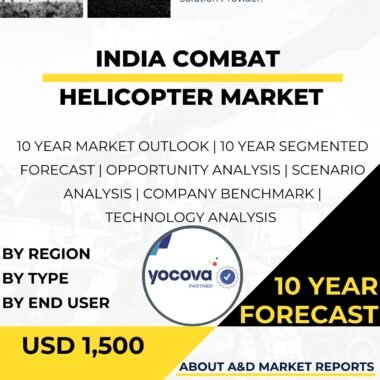Description
The combat drone market in Sweden is a critical aspect of the country’s defense industry, driving advancements in unmanned aerial technologies and providing a strategic edge in modern warfare. As a nation with a strong commitment to technological innovation and military modernization, Sweden actively invests in indigenous combat drone technology to ensure self-reliance, enhance its military capabilities, and address emerging security challenges.
Combat drones, also known as Unmanned Aerial Vehicles (UAVs) or Unmanned Aircraft Systems (UAS), have revolutionized the concept of aerial warfare. These unmanned platforms are designed for a wide range of military missions, including surveillance, reconnaissance, target acquisition, and precision strikes against enemy assets. The combat drone market in Sweden encompasses a diverse array of platforms, from small tactical drones to sophisticated, long-endurance unmanned aircraft, each tailored to meet the specific requirements of the Swedish Armed Forces.
Saab Group, a renowned defense contractor, is a key player in Sweden’s combat drone market, specializing in the development and integration of cutting-edge UAV technologies. Saab’s expertise in sensor systems, autonomous flight, and data analytics has made it a leading supplier of combat drones to the Swedish military and international customers. Saab’s flagship UAVs, such as the Skeldar and the Gripen E/F fighter with integrated drone capability, contribute significantly to Sweden’s defense modernization efforts and its military’s operational effectiveness.
Sweden’s investment in indigenous combat drone technology underscores the country’s commitment to technological self-reliance and defense autonomy. By developing and integrating advanced combat drones domestically, Sweden reduces its reliance on foreign suppliers and ensures a constant and reliable supply of these critical assets for its defense forces. Moreover, indigenous combat drone development fosters technological advancements and stimulates the domestic defense industry, contributing to the country’s technological growth and economic development.
The combat drone market in Sweden plays a vital role in enhancing the country’s defense readiness and military capabilities. Combat drones provide unique advantages, such as persistent surveillance, remote sensing, and rapid target engagement, which significantly contribute to the operational flexibility of the Swedish Armed Forces. These unmanned platforms enable military commanders to gain real-time situational awareness, make informed decisions, and respond quickly to dynamic and complex operational environments.
Moreover, combat drones serve as force multipliers, augmenting the capabilities of traditional manned aircraft and ground forces. The integration of UAVs with fighter jets and other military assets enhances the effectiveness of joint operations, enabling Sweden to conduct a wide range of military missions with increased efficiency and reduced risk to human operators.
As security threats continue to evolve, Sweden’s defense industry remains committed to advancing its combat drone technology. Research and development efforts focus on improving UAV endurance, stealth capabilities, and autonomous flight. Sweden’s advanced materials research and engineering expertise contribute to the development of more advanced and durable combat drones, enabling longer missions and enhanced survivability in contested environments.
Furthermore, Sweden’s commitment to international peacekeeping efforts drives the responsible export of combat drone technology. Sweden adheres to strict export control regulations to ensure that UAV systems are provided to responsible partners seeking to bolster their own defense capabilities and contribute to global security.
Despite its strengths, the combat drone market in Sweden faces challenges that warrant careful consideration. One primary consideration is the need to balance combat drone capabilities with other defense priorities. As defense budgets are allocated to various areas, Sweden must carefully assess its combat drone requirements to meet current and future operational needs effectively.
Moreover, ensuring the seamless integration of combat drones with other military assets and systems is essential. UAVs must be effectively integrated into the overall command and control architecture to optimize their operational effectiveness and provide comprehensive support to the Swedish Armed Forces.
In conclusion, the combat drone market in Sweden is a critical component of the country’s defense capabilities, providing strategic advantages and enhancing its military modernization efforts. Sweden’s investment in indigenous combat drone technology and its collaboration with companies like Saab Group ensure self-sufficiency and reliability in its military’s operational capabilities. The persistent surveillance, remote sensing, and rapid target engagement provided by combat drones significantly contribute to the operational readiness of the Swedish Armed Forces, enabling efficient decision-making and coordination in modern warfare. By addressing challenges proactively and investing in research and development, Sweden is well-positioned to maintain a robust and adaptive combat drone capability, supporting its defense needs and contributing to international peacekeeping and security efforts.




